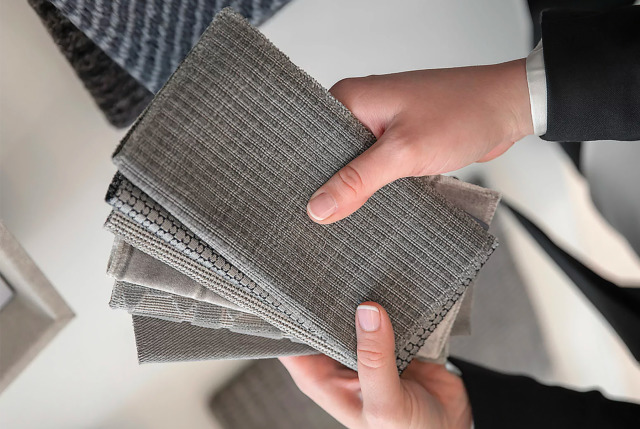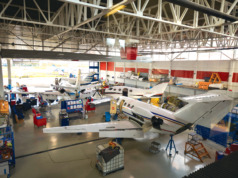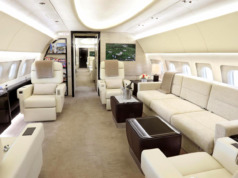
Business aviation is working toward creating more sustainable options for aircraft. Industry initiatives, such as the Business Aviation Commitment on Climate Change, aim to reduce carbon emissions by 50% by 2050, relative to 2005. Both by the increasing use of sustainable fuels (See “Clearing the Air,” BAA May/June 2019) and innovative engineering, such as aerodynamic improvements and engine technology which mean more efficient aircraft, we are seeing a dedication to reducing the industry’s carbon footprint.
What can you do to support these efforts? Whether you are buying a new aircraft, refurbishing a newly purchased preowned model, or updating your existing aircraft, the design options and materials you select for the interior of your cabin can contribute toward a more eco-friendly aircraft.
If creating a more sustainable aircraft interior is important to you, here are some points to consider:
- Convey your wishes to your interior designer at the start of your work together so he or she can help you navigate all the available options.
- Rethink heavy design selections. Elements like stone floors and quartz countertops, although beautiful, add extra weight to your aircraft. Using lighter alternatives will make it more fuel efficient.
- Source materials as locally as possible to the aircraft refurbishment facility to help eliminate the environmental impact of transporting goods across the world. Many fine carpet and textile manufacturers catering to the aviation industry are sprinkled across the globe.
- Consider a refurbished aircraft instead of buying new to decrease waste. Not only are there financial advantages to purchasing a preowned aircraft, but after a refurbishment it can feel virtually new.
- Select materials with increased durability to enhance the longevity of the interior of your aircraft. This is especially true if your aircraft will be available for commercial charter.
- Choose fabrics composed of natural fibers, which are more suitable for the stringent burn regulations for aircraft interiors. By selecting fabrics with natural fibers there is less off-gassing of harmful VOCs (Volatile Organic Compounds) in the cabin. When possible, choose suppliers that produce under socially fair conditions.
- Use reconstituted veneer on desks, tables, and cabinetry. A common wood fiber from well managed and plantation-grown forests, it has no impact on old growth forests.
- Repair, rather than replace, when it’s possible to do so. For example, can you restore existing seat leather instead of installing new? (See “Something to Hide,” BAA Nov/Dec 2016).
- Seek third-party certification (such as Cradle-to-Cradle or Greenguard) to help guide your decisions. While unlike buildings, there currently is no specific environmental certification for aircraft, many textile and material manufactures have eco-friendly products that feature safe dyes and rapidly renewable resources.
- Stock your galley with non-disposable plates, flatware, and coffee mugs, rather than paper, Styrofoam, or single-use plastic. Small choices matter.
- Enjoy the process. Designing the interior of your aircraft should be a great experience and selecting an eco-friendly option doesn’t mean you need to compromise on style or luxury. Aviation suppliers increasingly are providing green alternatives and operating in a more sustainable way.
Many of the options and requirements for your aircraft interior still have a way to go before they’re considered green or sustainable, but you can do your part by making a conscious decision to create designs and select materials that are more eco-friendly. As you design and select materials for your new interior, consider the chemical impacts, such as human toxicity, and ozone depletion; the physical impacts on deforestation, and loss of natural habitats; and ways to reduce resource consumption, by using renewables, and less water, energy, and soil.
Your aircraft interior can be both beautiful and eco-friendly. As the business aviation industry pushes toward being more sustainable, consider making more sustainable choices for your interior. BAA
Autumn Duntz, principal of Autumn Elizabeth Design, specializes in Aviation Interior Design. Formerly Sales Development Specialist and Interior Designer for Gulfstream Aerospace, she holds a MA in Design Management, and a BS in Interior Design.





Great info in here, locally sourcing is so important and I’d love to hear more about adding natural fibers!
[…] ALSO! Check out this article by Autumn Duntz regarding “Creating a More Sustainable Aircraft Interior“ […]